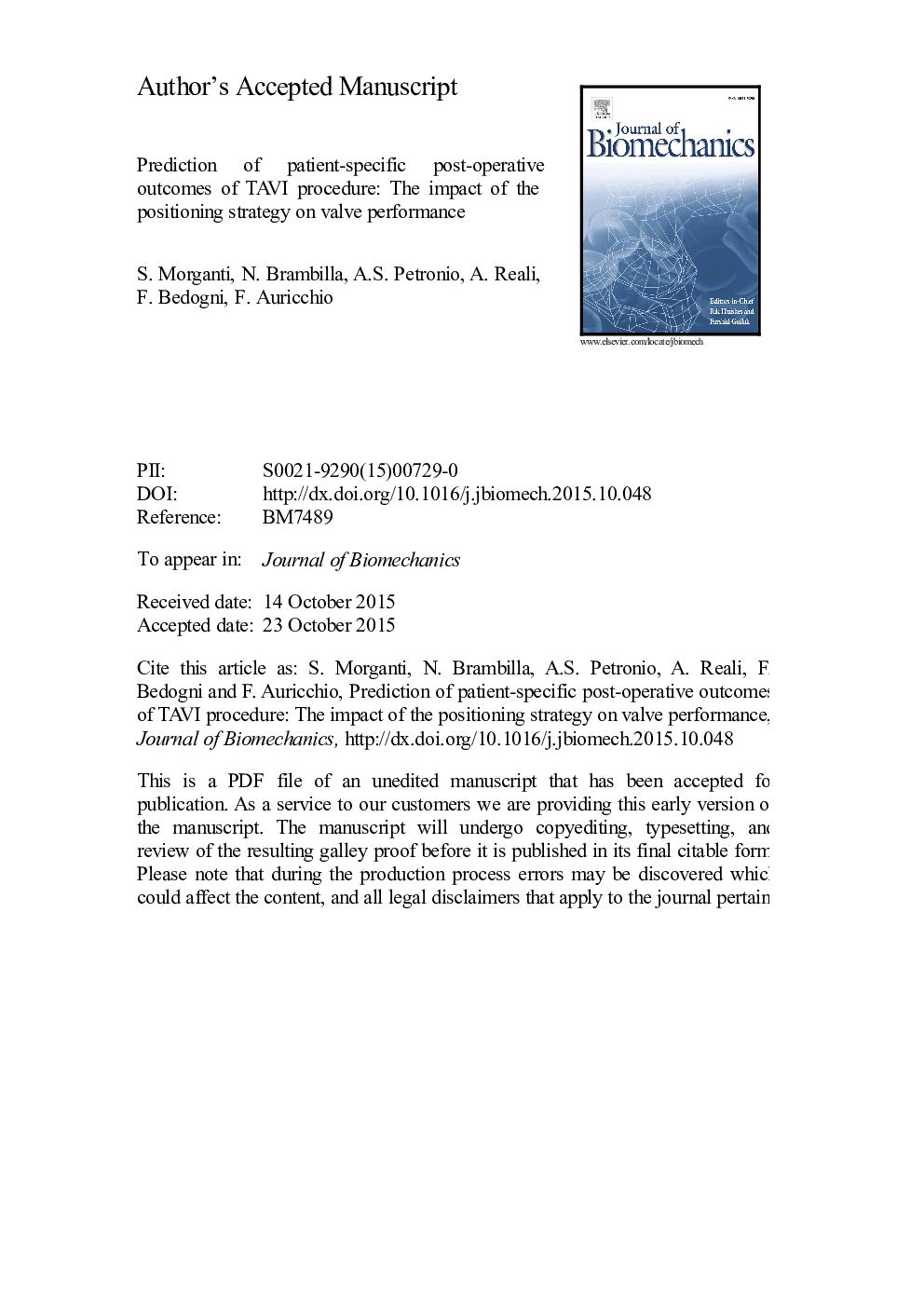| Article ID | Journal | Published Year | Pages | File Type |
|---|---|---|---|---|
| 5032415 | Journal of Biomechanics | 2016 | 19 Pages |
Abstract
Prosthesis positioning in transcatheter aortic valve implantation procedures represents a crucial aspect for procedure success as demonstrated by many recent studies on this topic. Possible complications, device performance, and, consequently, also long-term durability are highly affected by the adopted prosthesis placement strategy. In the present work, we develop a computational finite element model able to predict device-specific and patient-specific replacement procedure outcomes, which may help medical operators to plan and choose the optimal implantation strategy. We focus in particular on the effects of prosthesis implantation depth and release angle. We start from a real clinical case undergoing Corevalve self-expanding device implantation. Our study confirms the crucial role of positioning in determining valve anchoring, replacement failure due to intra or para-valvular regurgitation, and post-operative device deformation.
Related Topics
Physical Sciences and Engineering
Engineering
Biomedical Engineering
Authors
S. Morganti, N. Brambilla, A.S. Petronio, A. Reali, F. Bedogni, F. Auricchio,
